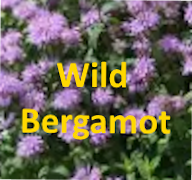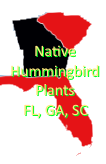Wild Bergamot Benefits: Stunning Nectar Plant for Hummingbirds
Wild Bergamot (Monarda fistulosa): A Nectar-Rich Haven for Hummingbirds
Wild Bergamot (Monarda fistulosa) is a striking perennial plant native to North America, celebrated not only for its beauty but also for its ecological importance. This vibrant wildflower plays a significant role in supporting pollinators, especially hummingbirds, making it a valuable addition to any wildlife-friendly garden. Let’s explore why Wild Bergamot is essential to hummingbirds, its distribution, nectar production, and how you can cultivate it successfully.
Why Wild Bergamot (Monarda fistulosa) Is Important to Hummingbirds
Hummingbirds are attracted to the bright, tubular flowers of Wild Bergamot, which provide a rich source of nectar. This plant’s flower shape and color are perfectly suited for hummingbird feeding, allowing these birds to hover comfortably while extracting nectar. The abundant nectar production makes it a vital energy source, especially during migration periods or in your backyard through the summer months.
Aside from sustaining hummingbirds, Wild Bergamot also supports bees, butterflies, and other pollinators, promoting a healthy and diverse garden ecosystem. By planting it, you’re not only supporting wildlife but also encouraging natural pest control and increased plant pollination.
Native Range: In How Many States Is Wild Bergamot Considered Native?
Wild Bergamot is considered native to approximately 40 U.S. states, primarily spread across the eastern and central regions as well as parts of the West. Its native range extends from the Canadian provinces down through much of the continental United States, excluding only the far northern or extremely southern areas where climatic conditions might not be suitable.
This widespread native status means it is well-adapted to various soil types, moisture levels, and climates, making it a versatile choice for gardeners promoting native plants.
Is Wild Bergamot a Good Nectar Producing Plant?
Absolutely. Wild Bergamot is renowned for its prolific nectar production. Studies and observations show that its flowers produce copious amounts of nectar, making them a magnet for nectar-feeding fauna. Not only does it offer ample nectar per bloom, but its blooming period—lasting several weeks—ensures a steady food supply for hummingbirds and other pollinators.
The sweet and aromatic scent of the flowers further aids in attracting these creatures from a distance. Gardeners who aim to support hummingbirds will find Wild Bergamot to be one of the most rewarding plants in terms of nectar availability.
How Many Wild Bergamot Plants Are Needed to Support a Small Charm of 5 Hummingbirds?
A small charm or group of five hummingbirds requires a reliable and continuous source of nectar to sustain their energy needs. On average, a hummingbird consumes about half its body weight in nectar each day.
Given these needs, planting around 6 to 8 mature Wild Bergamot plants should sufficiently support five hummingbirds, assuming these plants are healthy and blooming vigorously. This number provides enough flowers to offer a consistent nectar supply and reduces competition among the birds. Additionally, integrating a variety of other nectar-rich plants can help extend flowering periods and provide a diverse diet.
Is Wild Bergamot Easy to Take Care Of?
Yes, Wild Bergamot is considered a low-maintenance plant that thrives under a variety of conditions. It prefers full sun to partial shade and tolerates different soil types, though it flourishes best in well-drained soils. Once established, it is drought-tolerant and resistant to most pests and diseases.
Gardeners should water young plants regularly until they are established but can reduce watering afterward. Deadheading spent flowers can encourage a longer blooming season and prevent self-seeding if desired. Wild Bergamot also responds well to occasional division every few years to maintain vigor.
When Does Wild Bergamot Bloom?
Wild Bergamot typically blooms in mid to late summer, with flowering peaks from July through September. This timing is perfect for hummingbirds, as it coincides with their migration and breeding times when nectar demand is high.
The long bloom period ensures ongoing support throughout the critical months, providing a dependable nectar source when other flowers might be scarce.
How Large Will Wild Bergamot Become?
Wild Bergamot plants generally reach heights of 2 to 4 feet (about 60 to 120 cm), with a spread of about 1.5 to 2 feet (45 to 60 cm). Their upright stems and lush, fragrant foliage make them an attractive focal point in garden beds or naturalized areas. Because of their size, they can fill mid-height positions in flower borders or be planted in clusters to create a striking display.
Final Thoughts
Wild Bergamot (Monarda fistulosa) is more than just a beautiful wildflower—it’s a vital component of native ecosystems and an exceptional resource for hummingbirds. Its widespread native status in about 40 states, abundant nectar, ease of care, and attractive flowers make it a standout choice for gardeners seeking to support local wildlife. By including 6 to 8 plants in your backyard, you can create a nourishing haven for a small group of hummingbirds while enjoying the vibrant colors and sweet scent Wild Bergamot offers throughout the summer months.






